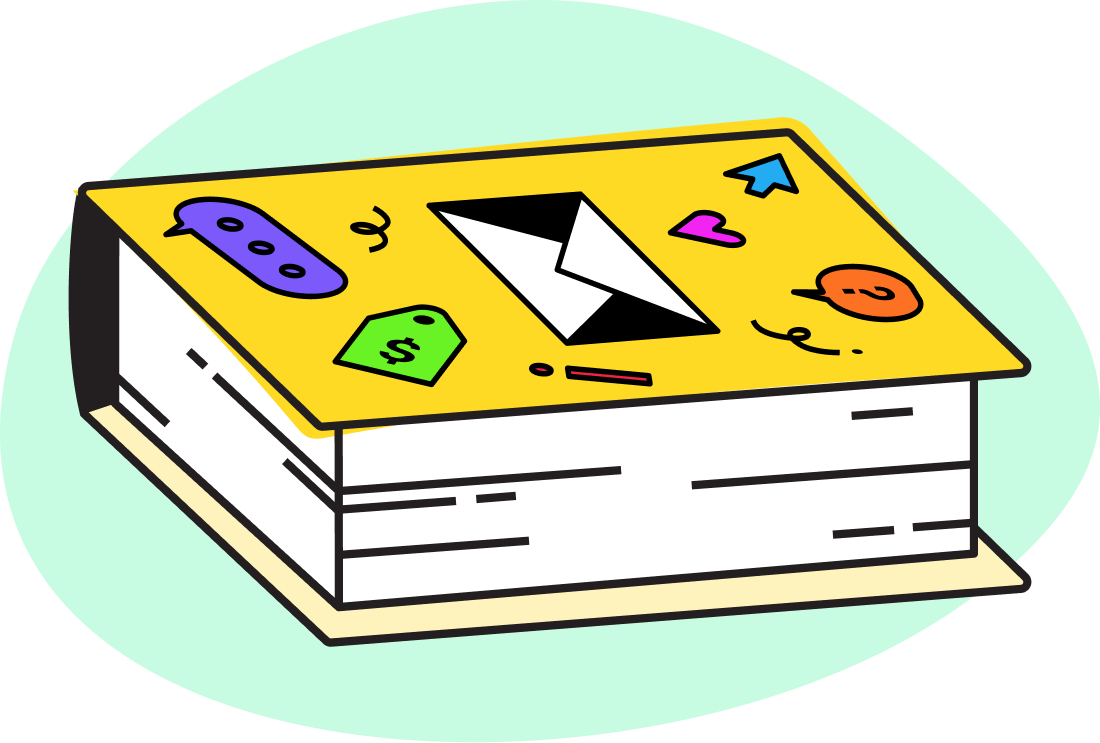Launching a new product is one of the most exciting events for an ecommerce brand — both for the team and the audience! With the right launch plan, you can get maximum leverage for your audience engagement, conversion, and retention. To start this lesson, we’re going to do a deep dive into what that launch plan can look like. Let’s go.
High-level product launch plan
You can think of your launch plan in three stages:
- Pre-launch
- Launch
- Post-launch
Each stage has its own goals and communication tactics. Let’s go through them one by one.
Pre-launch
There are two goals during the pre-launch stage:
- Get your audience really excited.
- Grow your SMS list.
Product launches are one of the two best times to grow your SMS list. This is because product launches are when you can share with your subscribers the very real, tangible benefits of signing up for texts. Here’s how:
About 7 days before your product launch, send a “teaser” email campaign. Announce that your team is about to launch an exciting new product and that your SMS subscribers will get first access to it. The main CTA in this teaser email should be to join your SMS list (through a simple page with an embedded SMS form).
Here’s an example from a soda brand called Olipop.
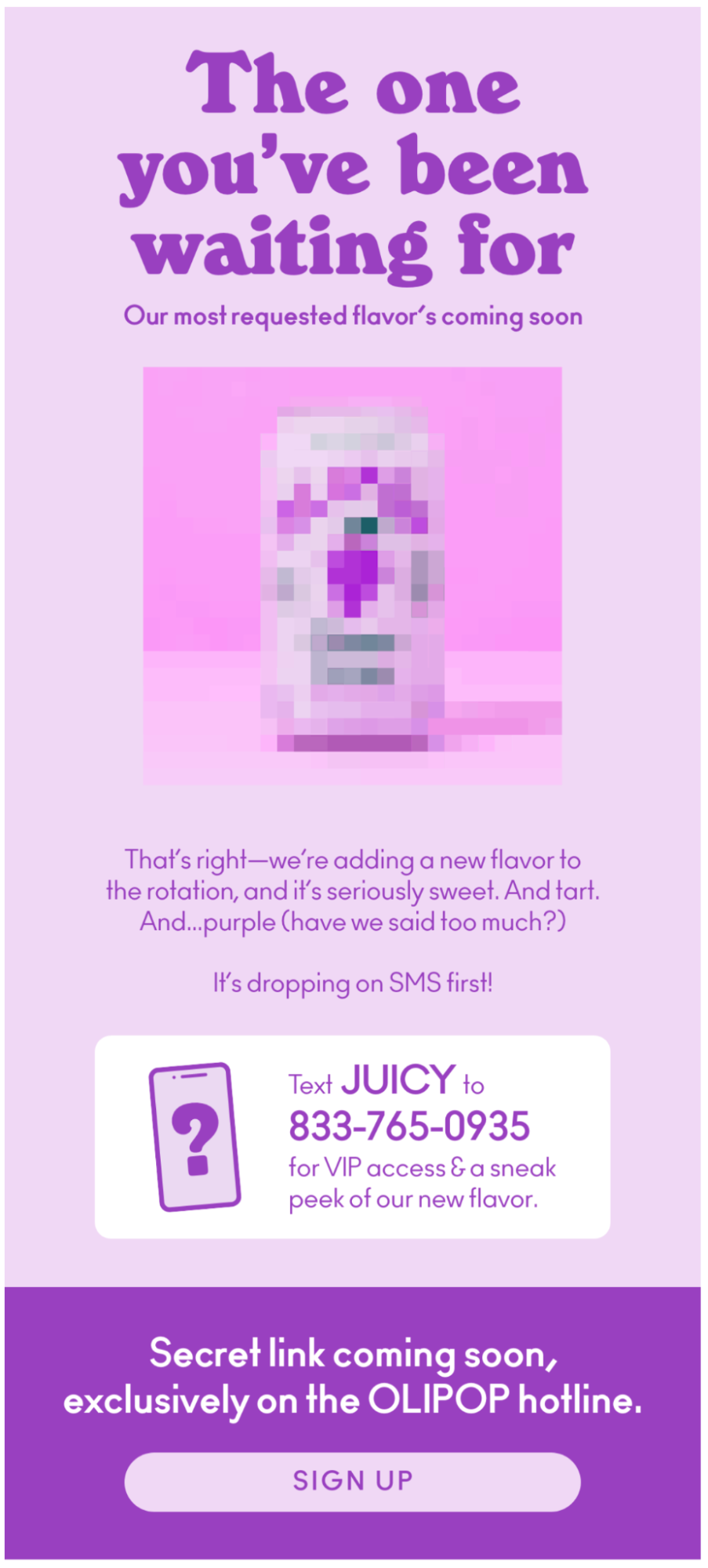
The key with teaser emails is to pique your readers’ interest, spark their curiosity, and generally delight and entertain. We recommend giving readers a hint about the upcoming product, perhaps with a visual clue, without revealing exactly what it is.
Teaser emails are also the time to highlight the benefit of being an SMS subscriber: first access to new products (in addition to first access to all other things, including sales, special announcements, and more).
For subscribers who are already on your SMS list, you can send a teaser like this one from Aura Bora.
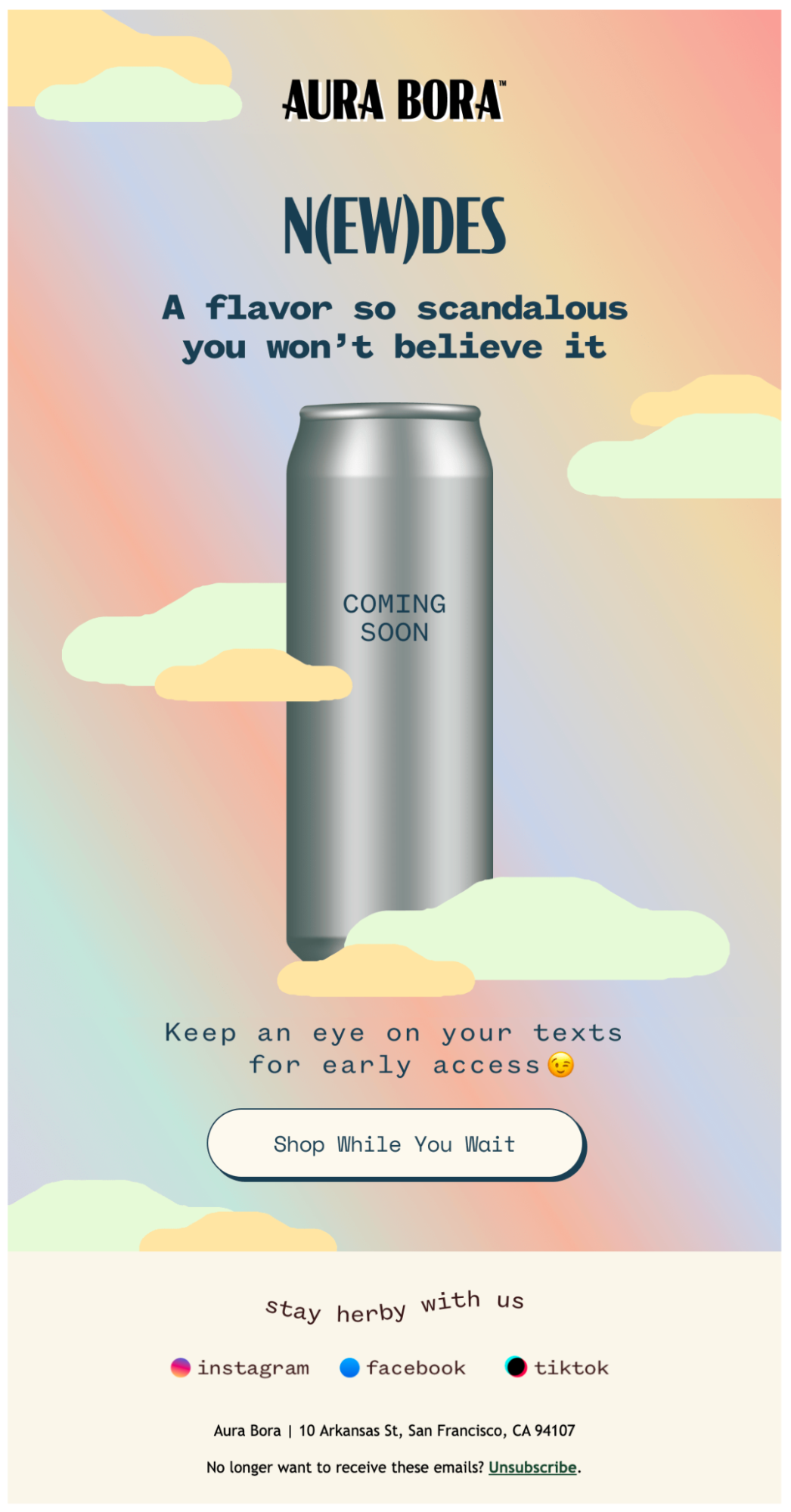
Product launch time
Launch SMS
On launch day, make sure you deliver on your promise and send the announcement to SMS subscribers first (before email, before social media, before anyone else). This is a great way to continue to build a loyal relationship with your subscribers, as well as differentiate your SMS channel via exclusivity.
Take a look at how Aura Bora executes this in their launch SMS campaign. Notice how they highlight “you’re the first one to hear about this.”
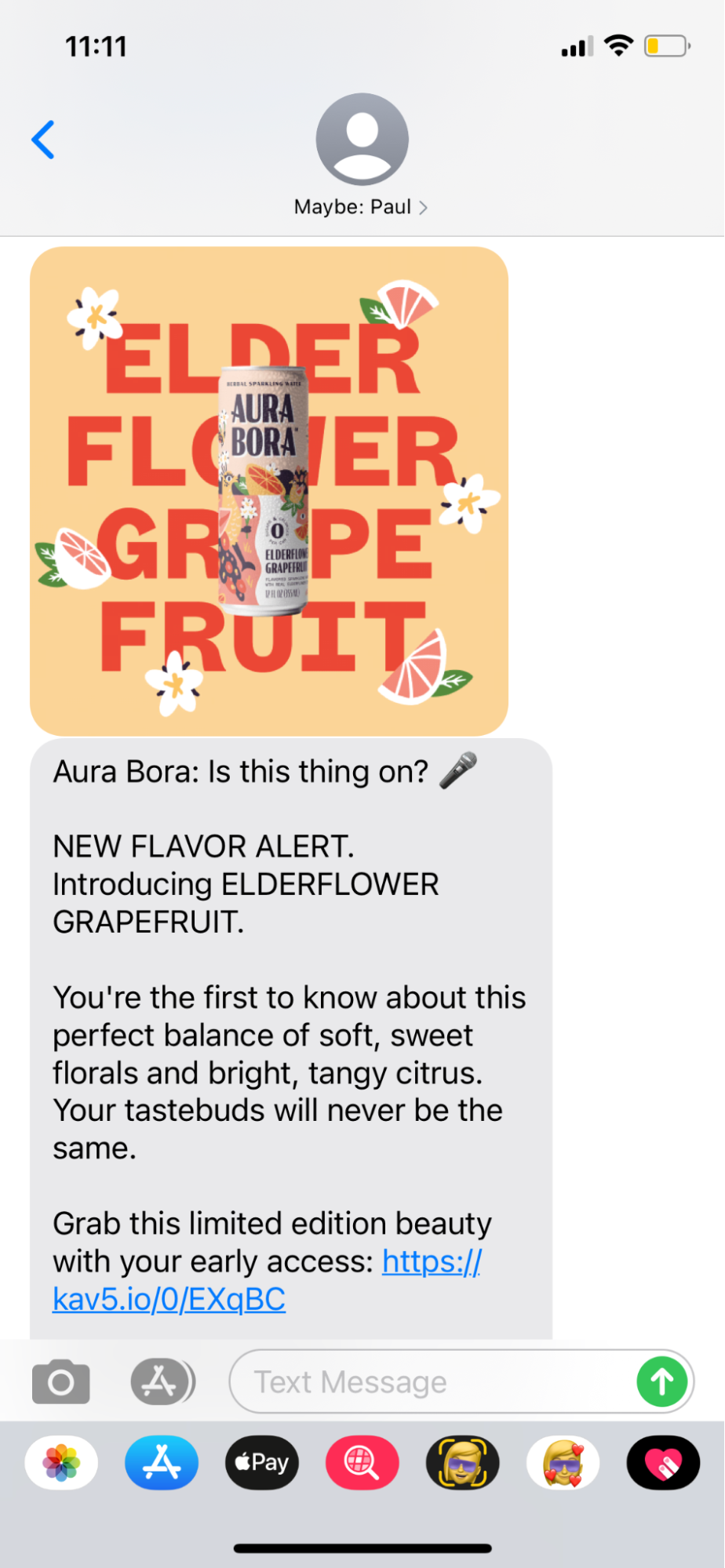
Email 1
The following day, send your first email campaign (and announce the new product on social media). We recommend sending multiple email campaigns about your launch over the course of the next couple of weeks.
The first launch email should be short, sweet, and cover the following objectives:
- Get the reader very excited.
- Introduce the main value proposition of the product.
- Give a little context about why this product is so important/great/necessary.
To continue with the Aura Bora example, let’s look at their launch email #1.
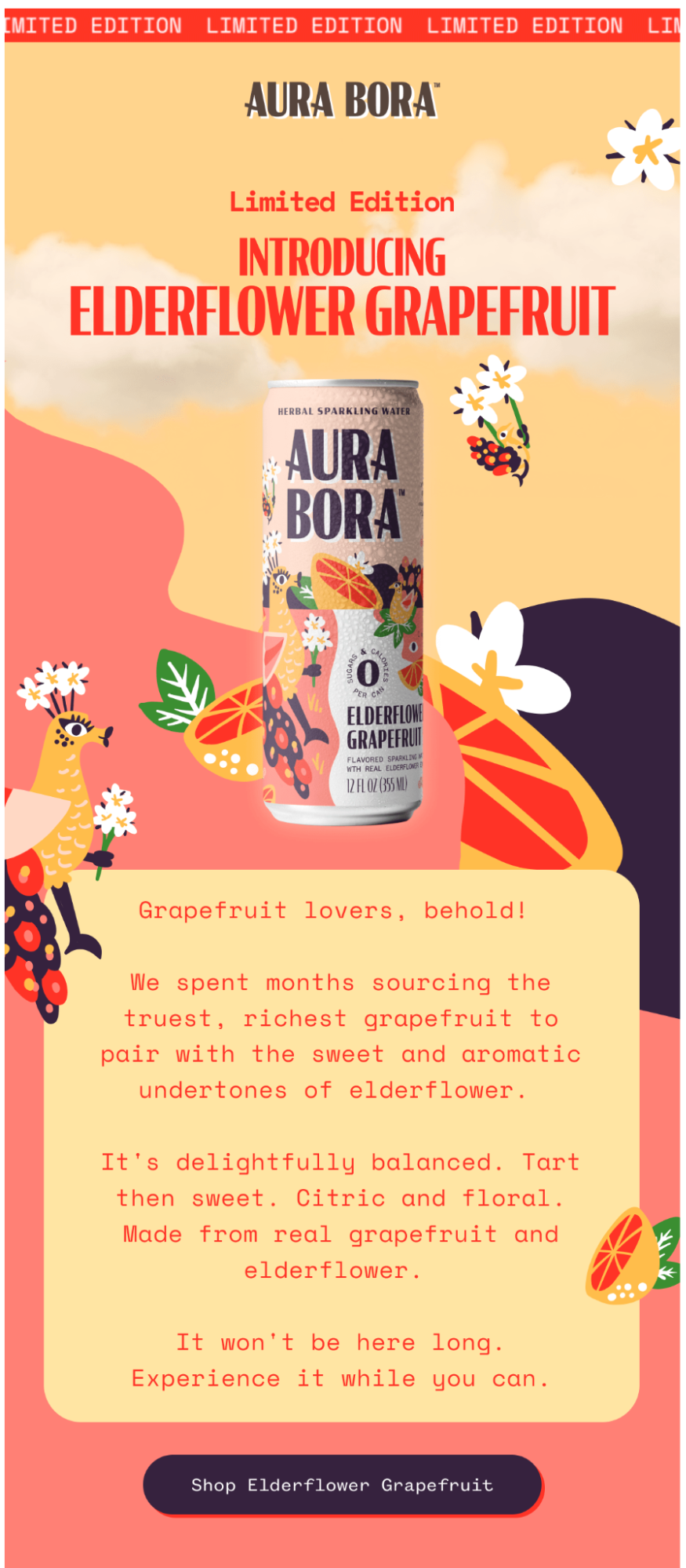
The reason you make these first launch emails short is that you want to capitalize on the excitement you’ve built thus far and get people to the product page as soon as possible. For your most engaged subscribers, this first launch email will be enough. You’ll be able to convert them with the least amount of friction.
Email 2
Before they’re ready to make a purchase, the majority of your subscribers will need more information than email 1 can provide. That’s why you want to follow up the next day with another email, and provide the kind of information people are craving the most.
This second launch email should be about the materials or ingredients of your new product. Be sure to answer the question: how is this product built and what are the parts that make it so great?
Here’s how Aura Bora handled product details in their launch email 2.
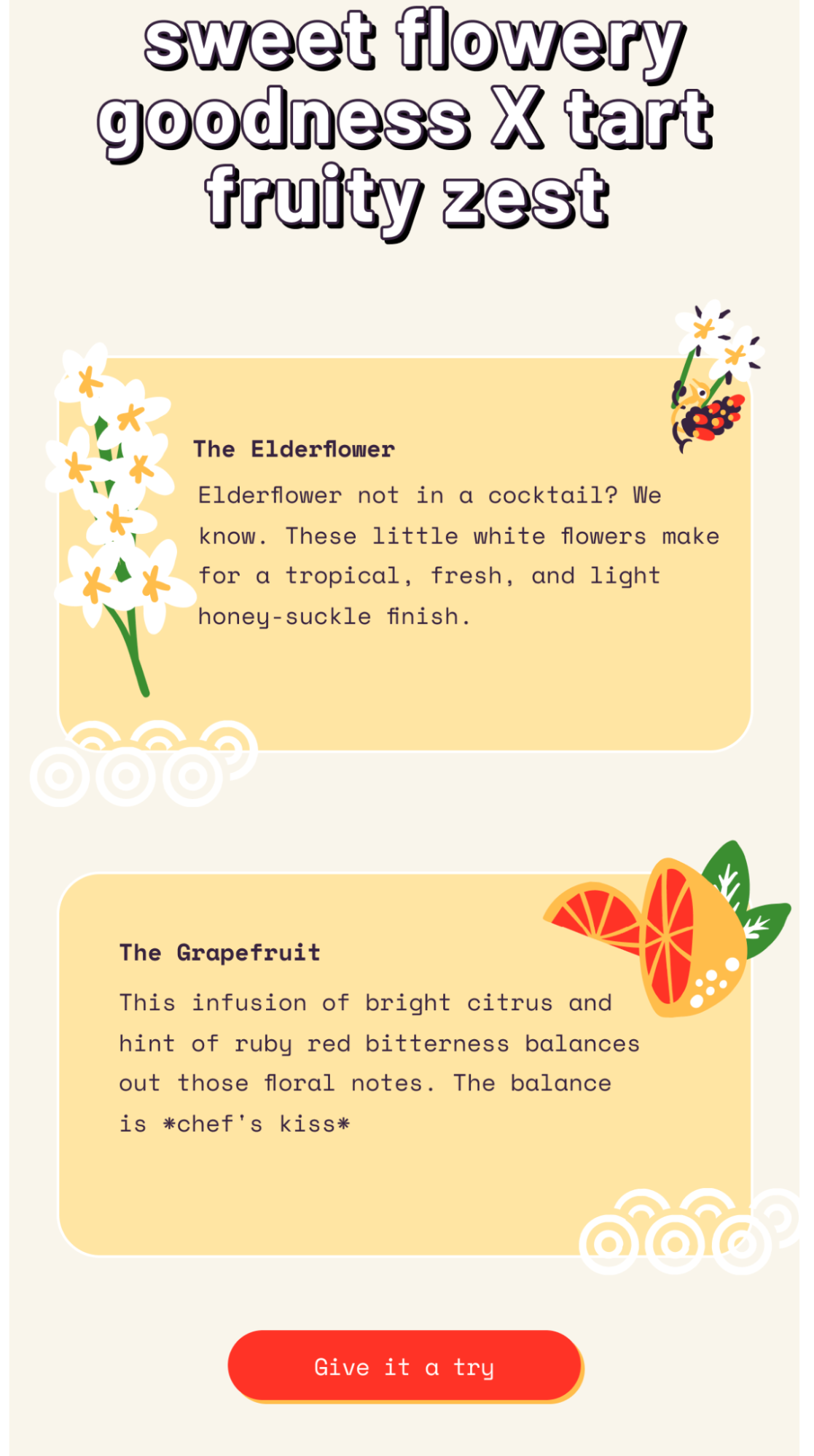
Email 3
The third email in your product launch sequence could be a letter from your founder (or the entire team). If your brand is small, sending a letter from your founder could be a unique personal touch that helps you stand out to shoppers.
In the letter, explain where the idea for this product came from, why it’s important to you personally, and why you believe subscribers will love it.
Here’s an example from Aura Bora.
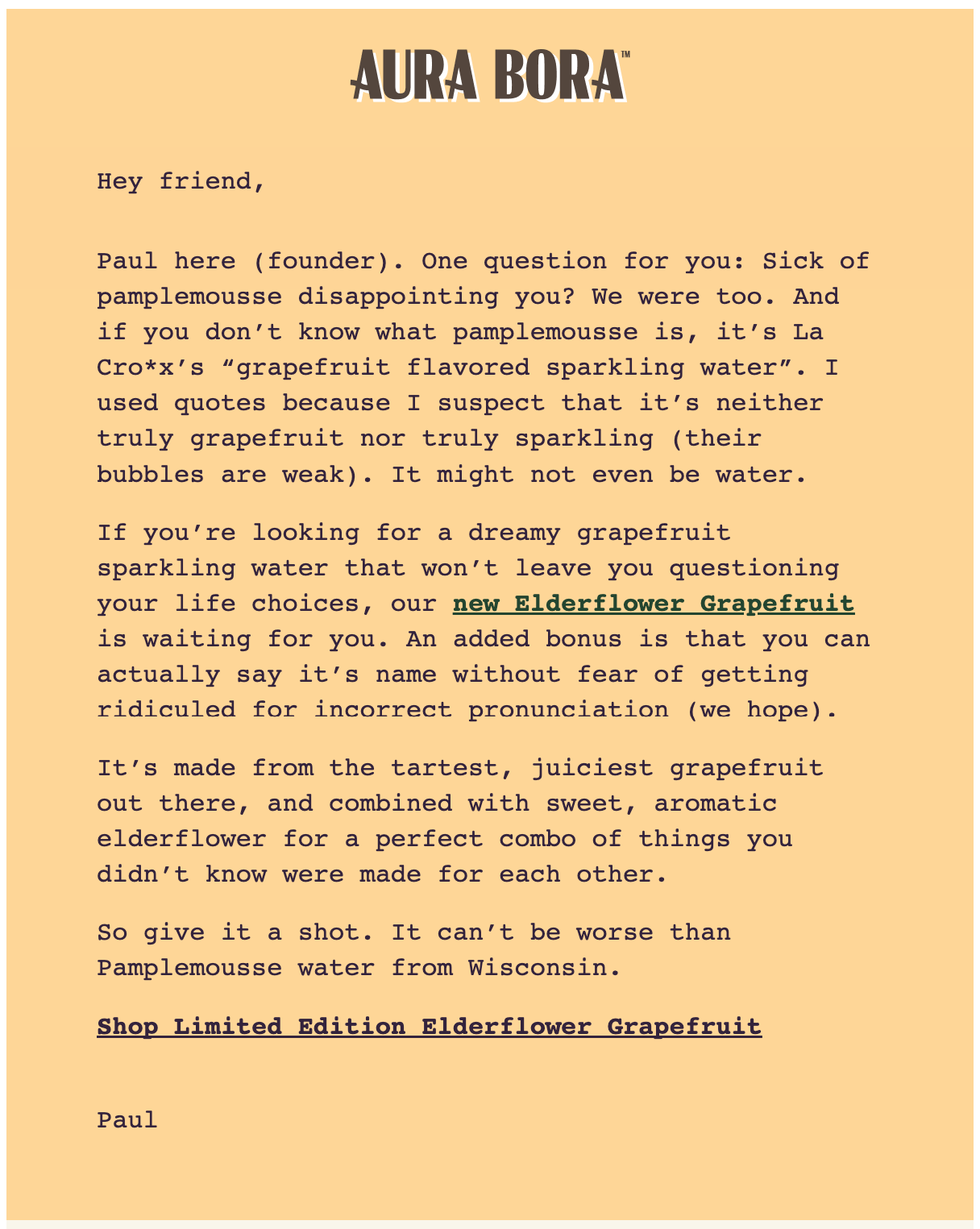
Email 4
In your final launch email, focus on new customer reviews to demonstrate social proof and fully overcome any remaining hesitation among subscribers. At this point, subscribers got excited, learned how your product is made and heard directly from your founder. The final missing piece is hearing from other shoppers and learning what they thought about the product.
Here’s how Aura Bora executed this email.

Post-launch email
Perhaps somewhat counterintuitively, a product selling out is a great opportunity to continue generating buzz. Selling out a product is a signal of its popularity, as well as the success of your brand. It’s also a great time to email your subscribers.
In your post-launch email, highlight the fact that your product sold out (in minutes, hours, days?), thank your audience for their warm welcome of this new product, and remind those who are not yet on the SMS list to join so that they never miss out on product announcements ever again.
This is how Aura Bora wrapped up their Elderflower Grapefruit flavor journey.
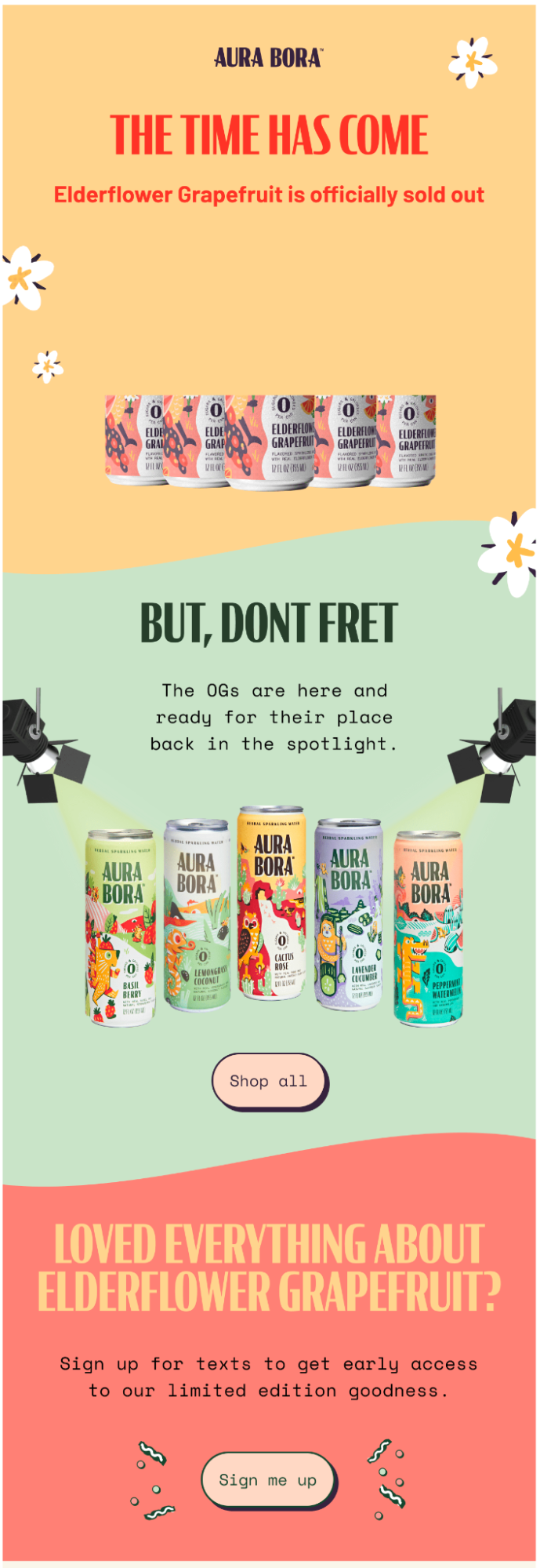
Overall product launch email and SMS timeline
Let’s recap all the launch-related email and SMS campaigns and put them on a timeline:
- Day 0: Teaser email with an invite to SMS
- Day 1: Launch SMS
- Day 2: Launch Email 1
- Day 3: (optional) - resend Launch Email 1 to those who haven’t opened
- Day 4: Launch Email 2 - Ingredients
- Day 6: Launch Email 3 - Letter from founder
- Day 8: (optional) - resend Launch Email 3 to those who haven’t opened
- Day 12: Launch Email 4 - Customer reviews
If this is a limited-edition product, try the following:
- Day X → Post-Launch Email → Sold Out
Email frequency and segments
Just because you’ve prepared five or more emails for your product launch doesn’t mean everyone on your list should receive them. Following our segmentation principles, you’ll want to try to meet each subscriber where they are in terms of how much they want to hear from you.
Your most engaged subscribers (engaged for 30 to 60 days) will want to hear from you the most, so include them in all of these emails.
Your least engaged subscribers will only want to hear about the most important things, so only send them two emails: the teaser and the announcement.
Your medium-engaged subscribers can get 3 to 4 emails.
Let’s review your plan with the suggested segments:
- Day -7: Teaser email with an invite to SMS | Everyone on the list
- Day 1: Launch SMS | SMS subscribers
- Day 2: Launch Email 1 | Everyone on the list
- Day 4: Launch Email 2 - Ingredients | Engaged 180 days
- Day 6: Launch Email 3 - Letter from founder | Engaged 60 days
- Day 12: Launch Email 4 - Customer reviews | Engaged 60 or 30 days
If this is a limited-edition product, try the following:
- Day X → Post-Launch Email → Sold Out | Engaged 90 days
Ready to launch a new product and nail the associated email and SMS marketing? We’re excited for you to put everything you’ve learned in this lesson to good use, and experience the kind of response, product sellouts, and conversions you deserve. Go get it!
